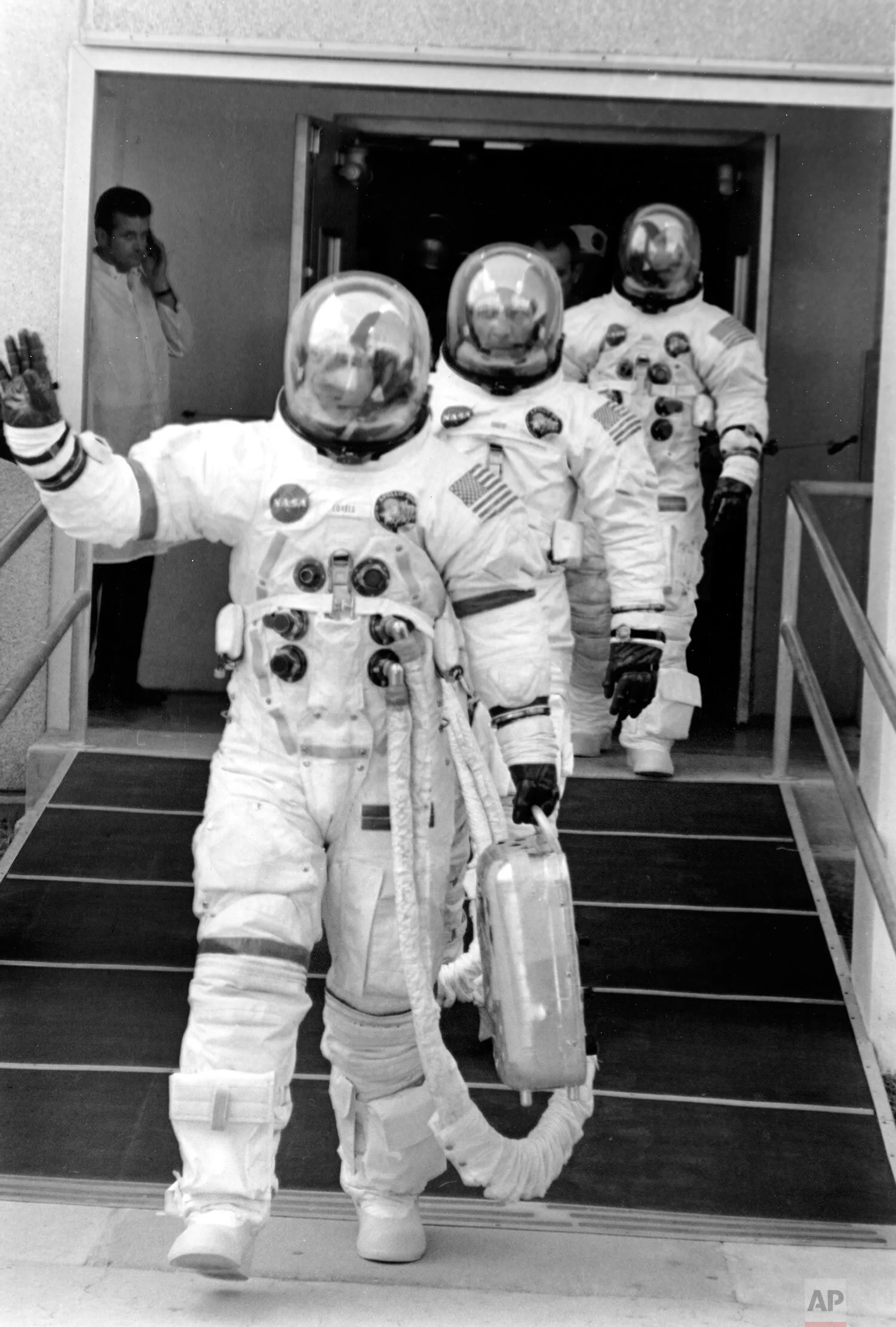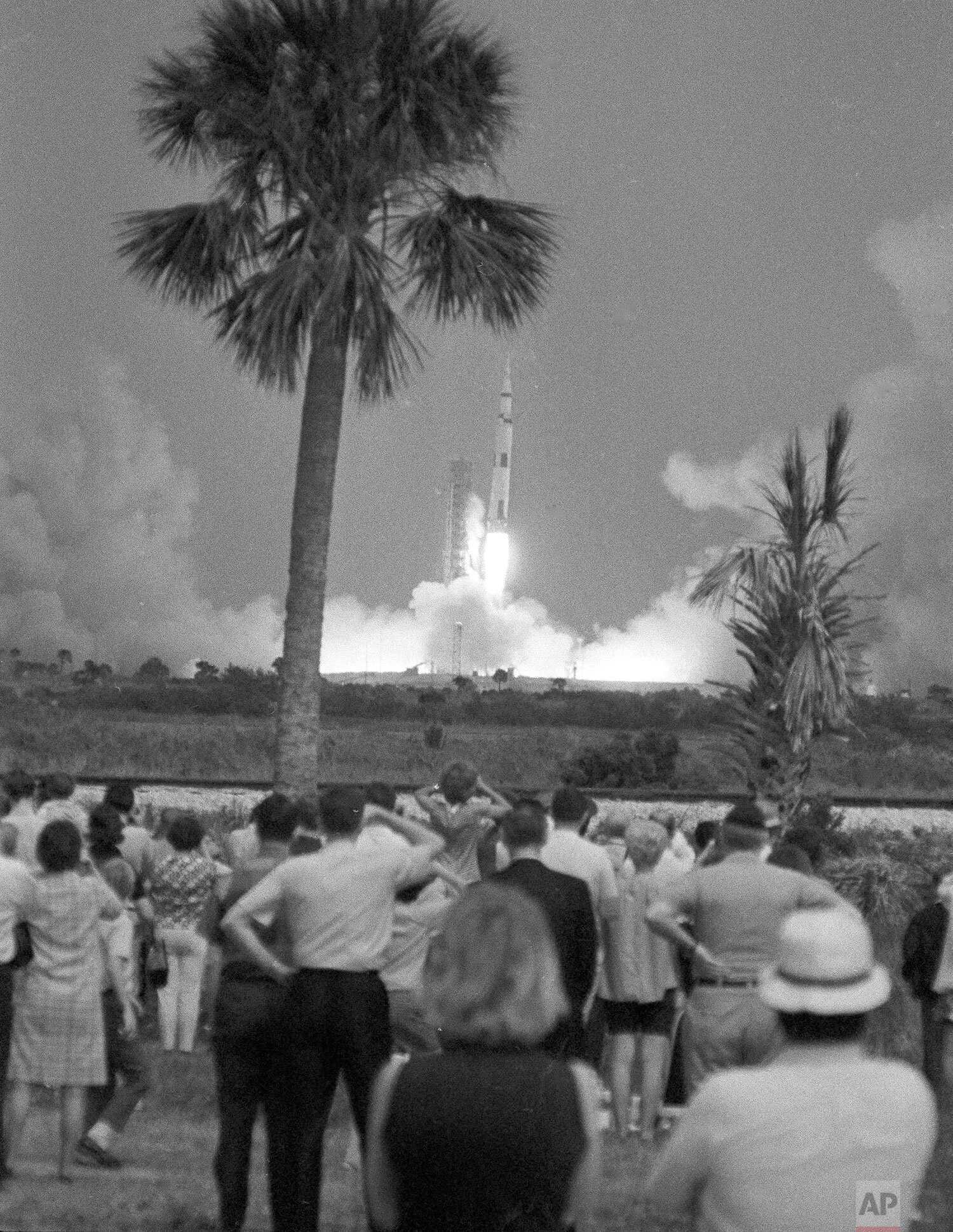50 years since Apollo 13 aborted moon-landing mission

Apollo 13′s astronauts never gave a thought to their mission number as they blasted off for the moon 50 years ago. Even when their oxygen tank ruptured two days later — on April 13.
As mission commander Jim Lovell sees it, he’s incredibly lucky. Not only did he survive NASA’s most harrowing moonshot, he’s around to mark its golden anniversary.
A half-century later, Apollo 13 is still considered Mission Control’s finest hour.
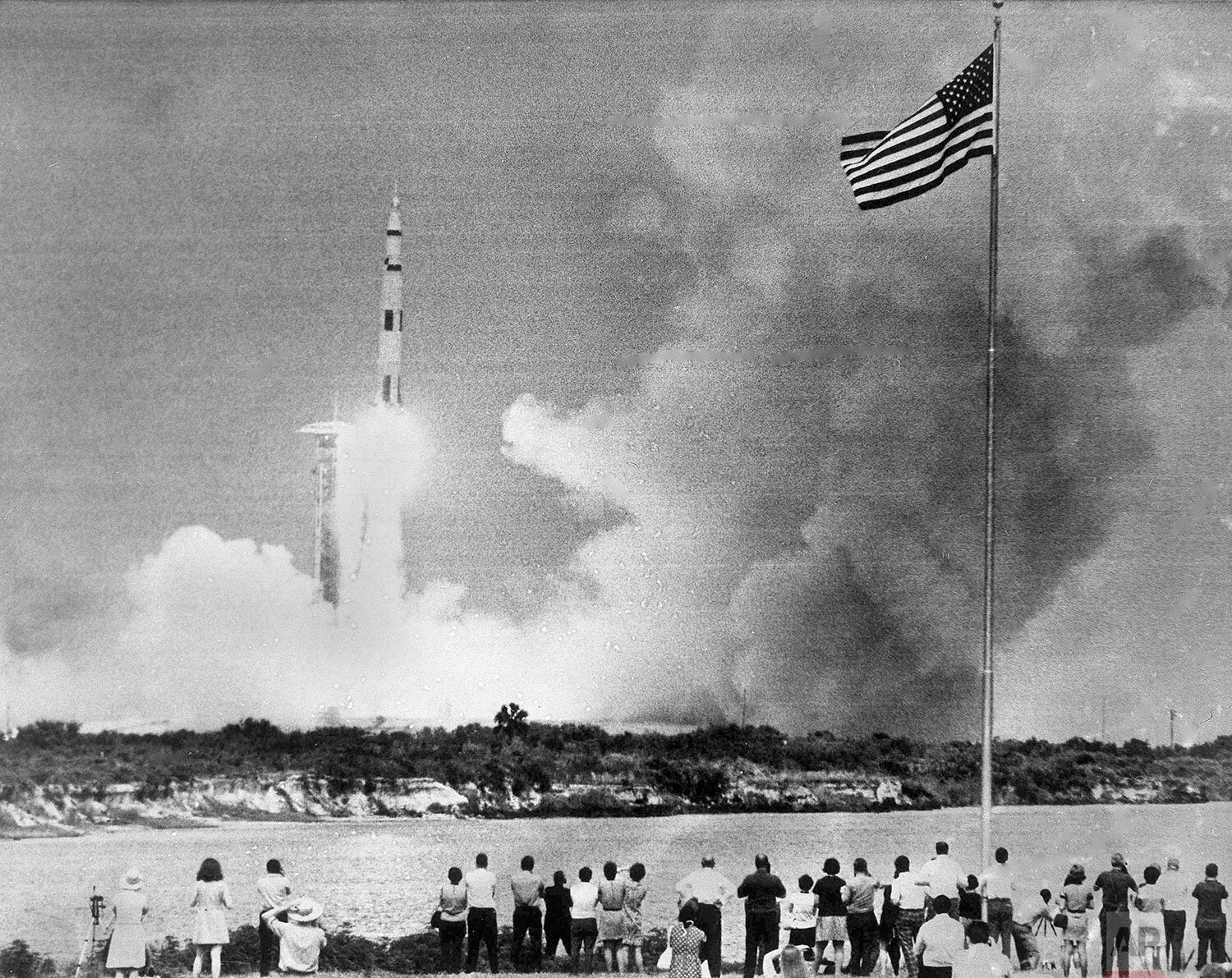
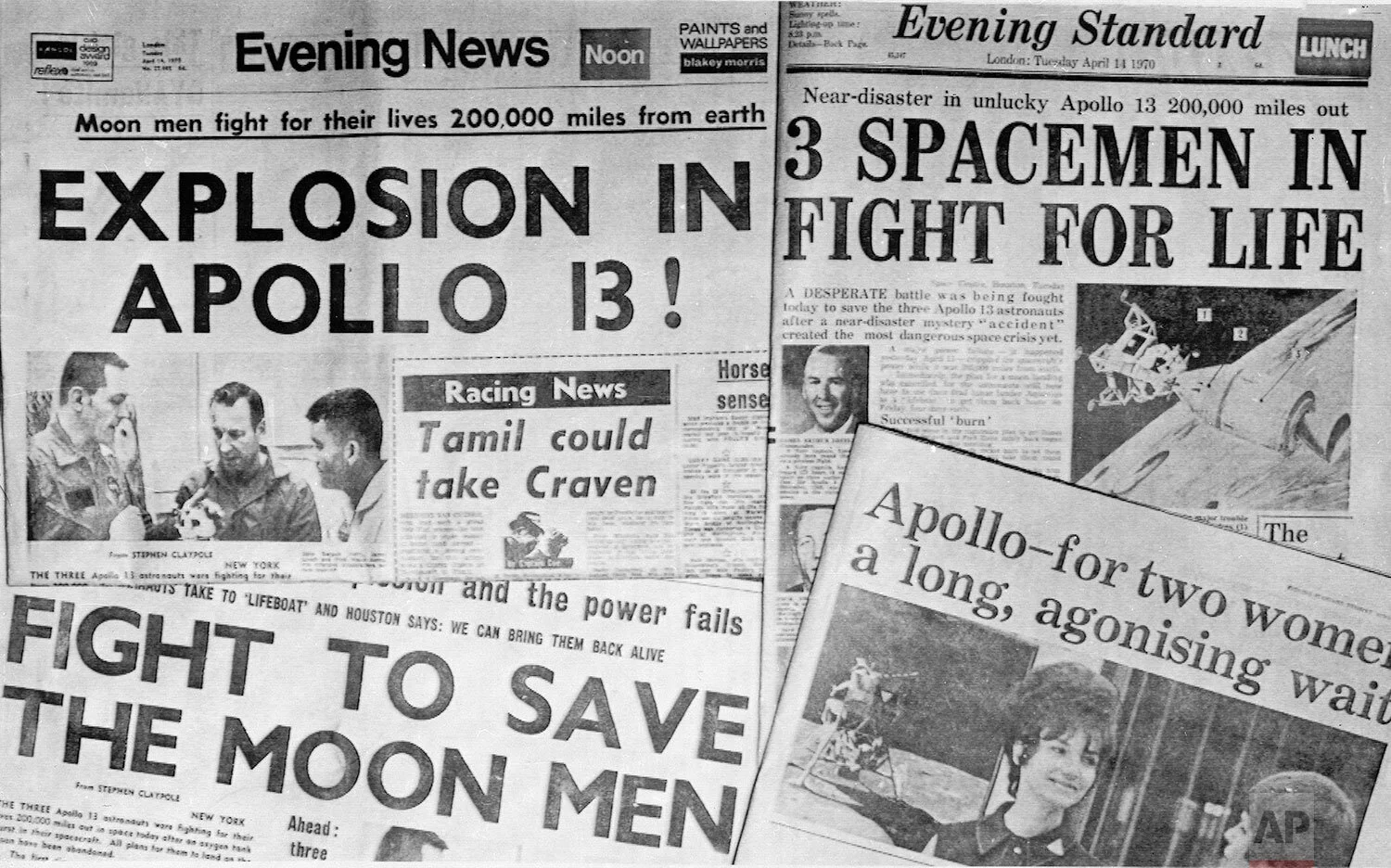
London evening newspaper headlines report the Apollo 13 troubles, outlining the battle to bring the astronauts and their crippled spaceship back to Earth from a quarter million miles away. London, April 14, 1970. (AP Photo/Eddie Worth)
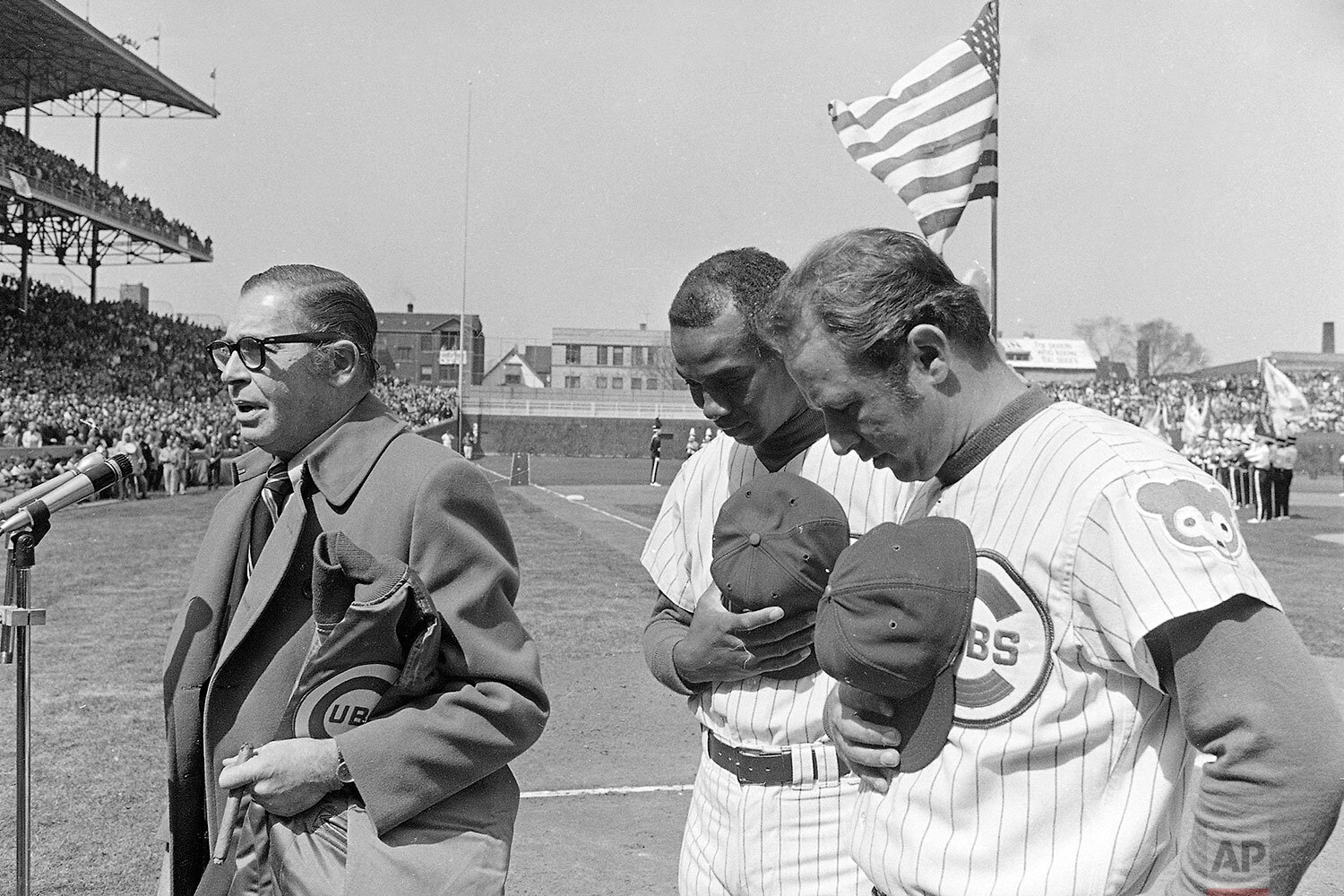
Chicago Cubs co-captains Ernie Banks and Ron Santo, right, bow heads as master of ceremonies Milton Berle leads opening-day crowd in prayer for safe return of Apollo 13 astronauts Tuesday, April 14, 1970 in Chicago. Cubs played Philadelphia before a capacity crowd in Chicago. (AP Photo)
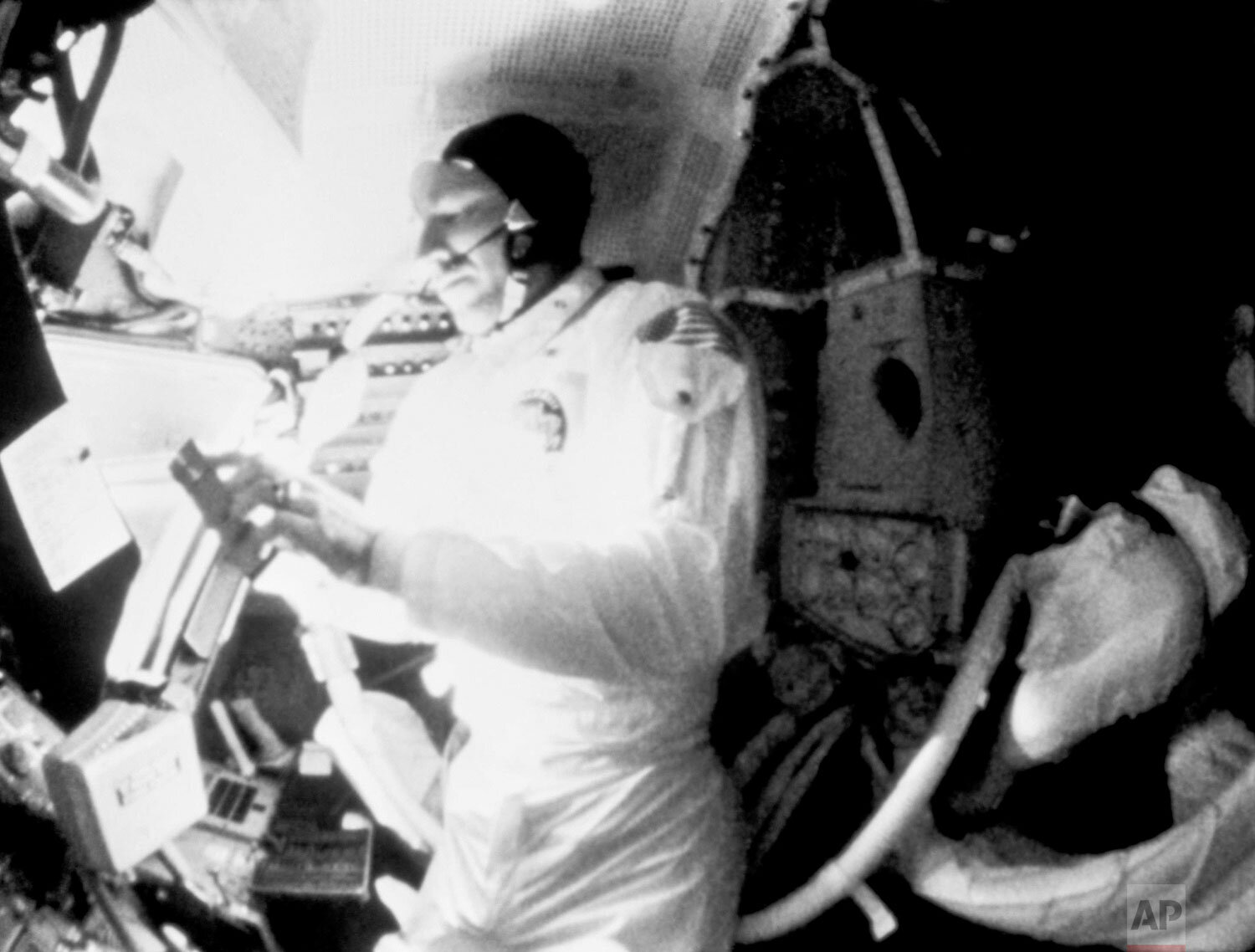
Apollo 13 commander James A. Lovell Jr., operates a tape recorder in the lunar module as the spacecraft made its way back to earth following the oxygen tank explosion. This photo was taken from a 16mm color movie film released by NASA in Houston, Tex., April 20, 1970. (AP Photo)
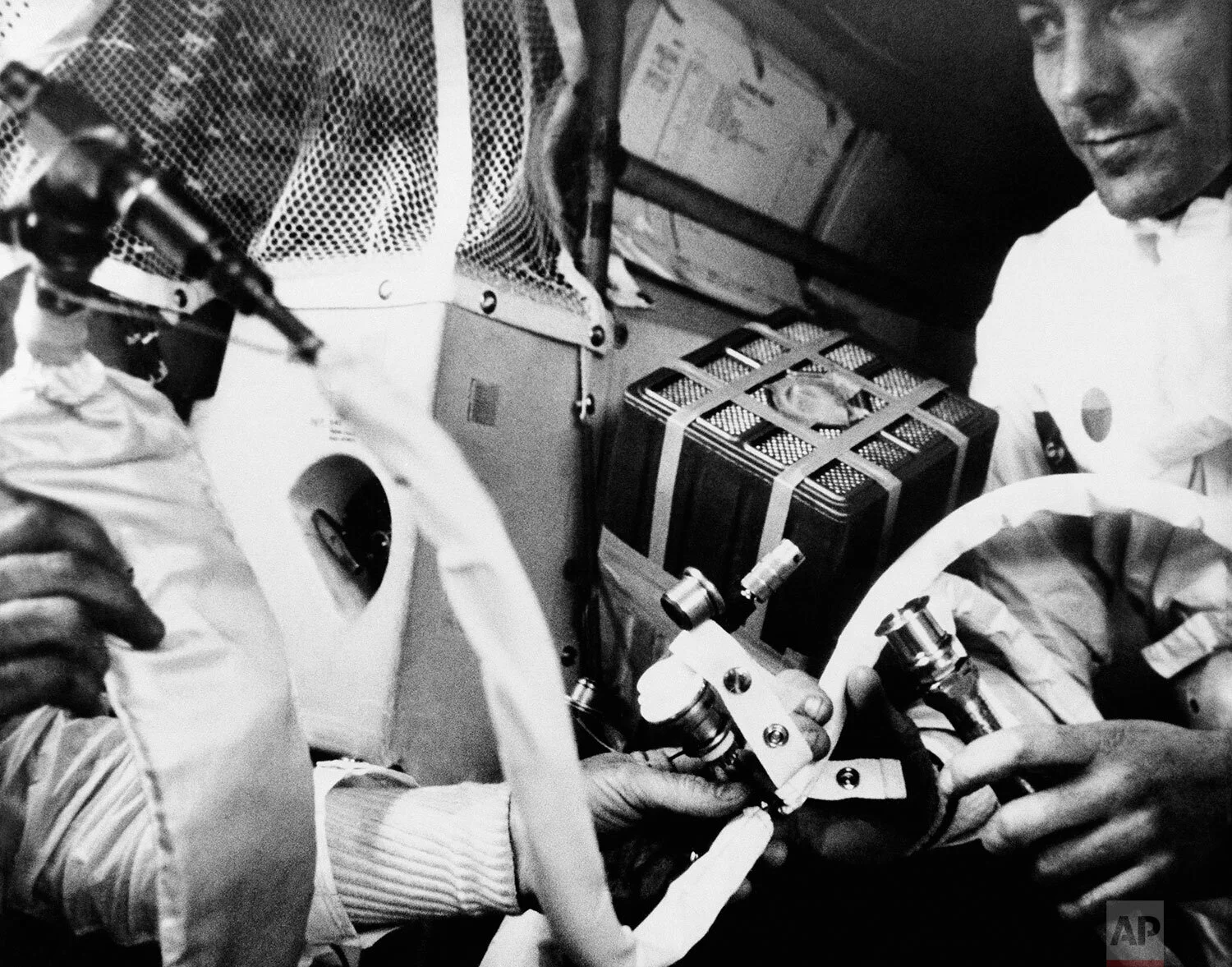
In this image provided by NASA, Apollo 13 command module pilot John L. Swigert Jr., and another crewman, start to hook up the lithium hydroxide canister in the lunar module April 20, 1970, in an effort to get rid of carbon dioxide in the cabin as the spacecraft limped back to earth following the oxygen tank explosion that almost caused the flight to end in disaster. (AP Photo/NASA)
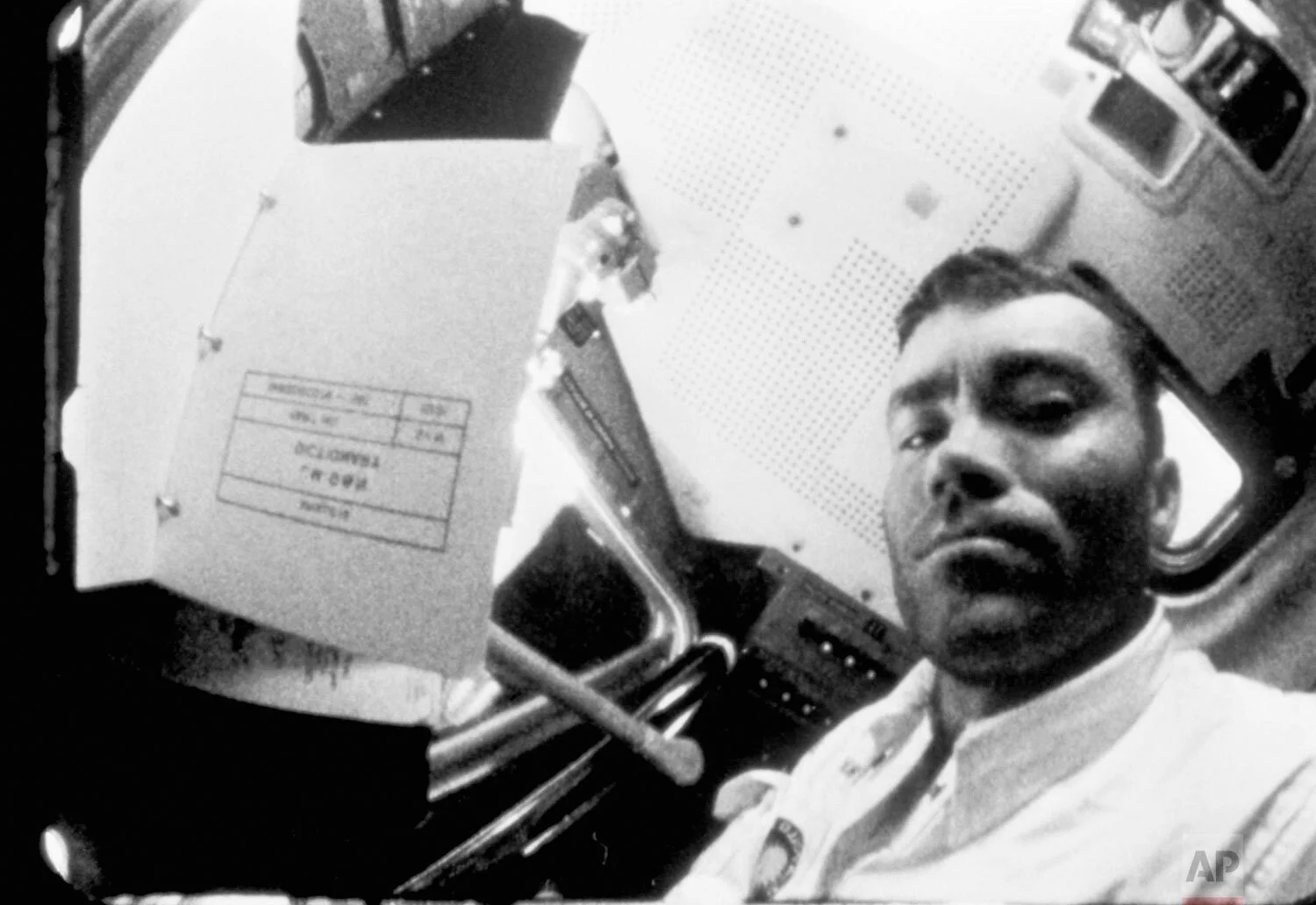
Apollo 13 lunar module pilot Fred W. Haise Jr., watches flight plans float away in the cabin of the lunar module as the damaged spacecraft headed back to earth after the oxygen tank explosion which nearly wrecked the ship. This photo was taken from a 16 mm color film released by NASA in Houston, Tex., April 20, 1970 and contained no other information. (AP Photo).
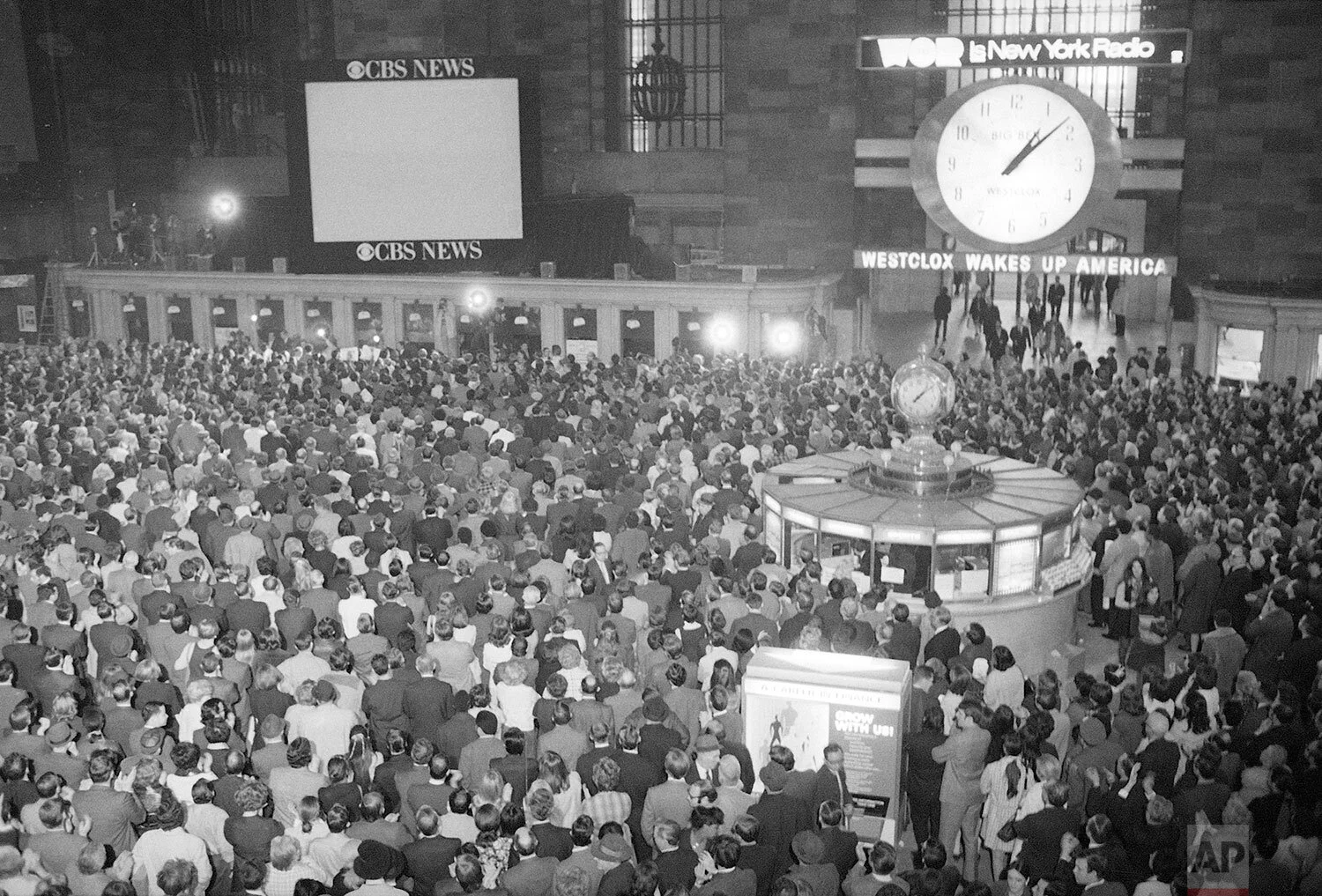
All eyes are focused on the television screen in Grand Central Station in New York City, at 1pm, April 17, 1970 watching for the safe landing of the Apollo 13 astronauts in the Pacific. (AP Photo/J. Spencer Jones)
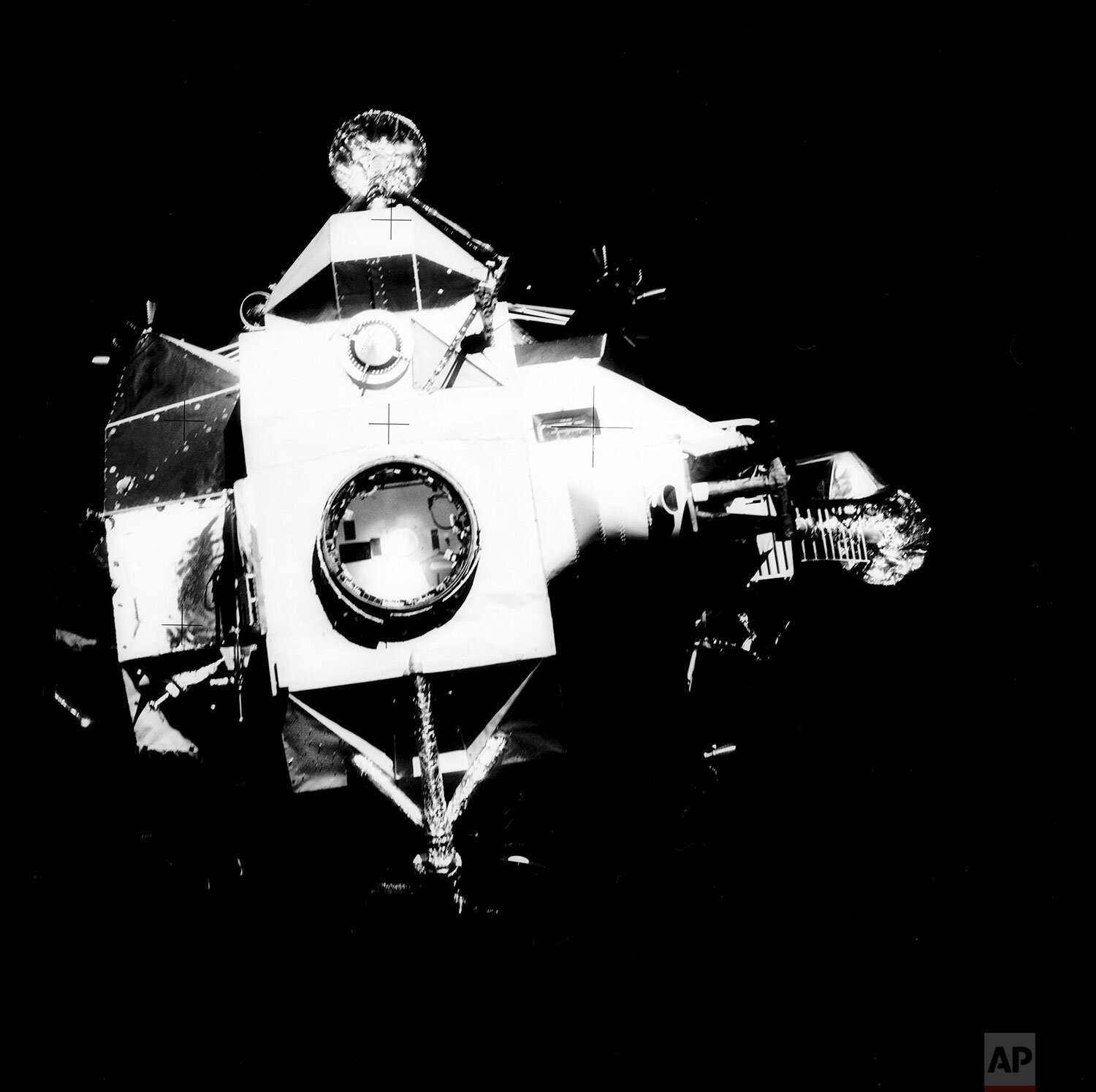
A view of the Apollo 13 Lunar Module (LM) was photographed from the Command Module (CM) just after the LM had been jettisoned, April 17, 1970. The jettisoning occurred a few minutes before 11 a.m. (CST), just over an hour prior to splashdown of the CM in the south Pacific Ocean. (AP Photo/NASA)
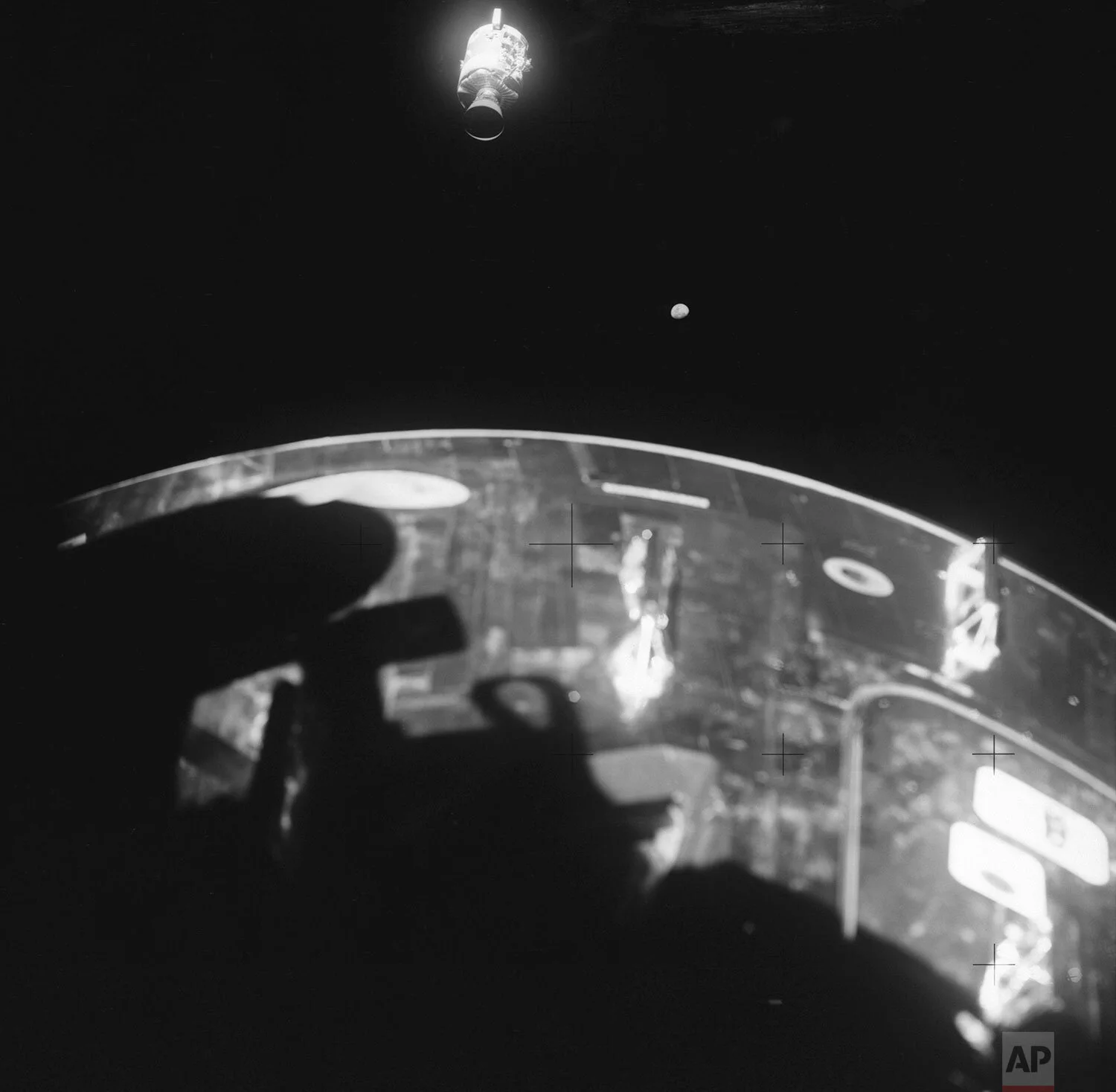
A view of the damaged Apollo 13 Service Module (SM) was photographed from the Lunar Module/Command Module following SM jettisoning, April 17, 1970. As seen here, an entire panel on the SM was blown away by the apparent explosion of oxygen tank number two located in Sector 4 of the SM. Two of the three fuel cells are visible just forward (above) the heavily damaged area. Three fuel cells, two oxygen tanks, and two hydrogen tanks are located in Sector 4. (AP Photo/NASA)
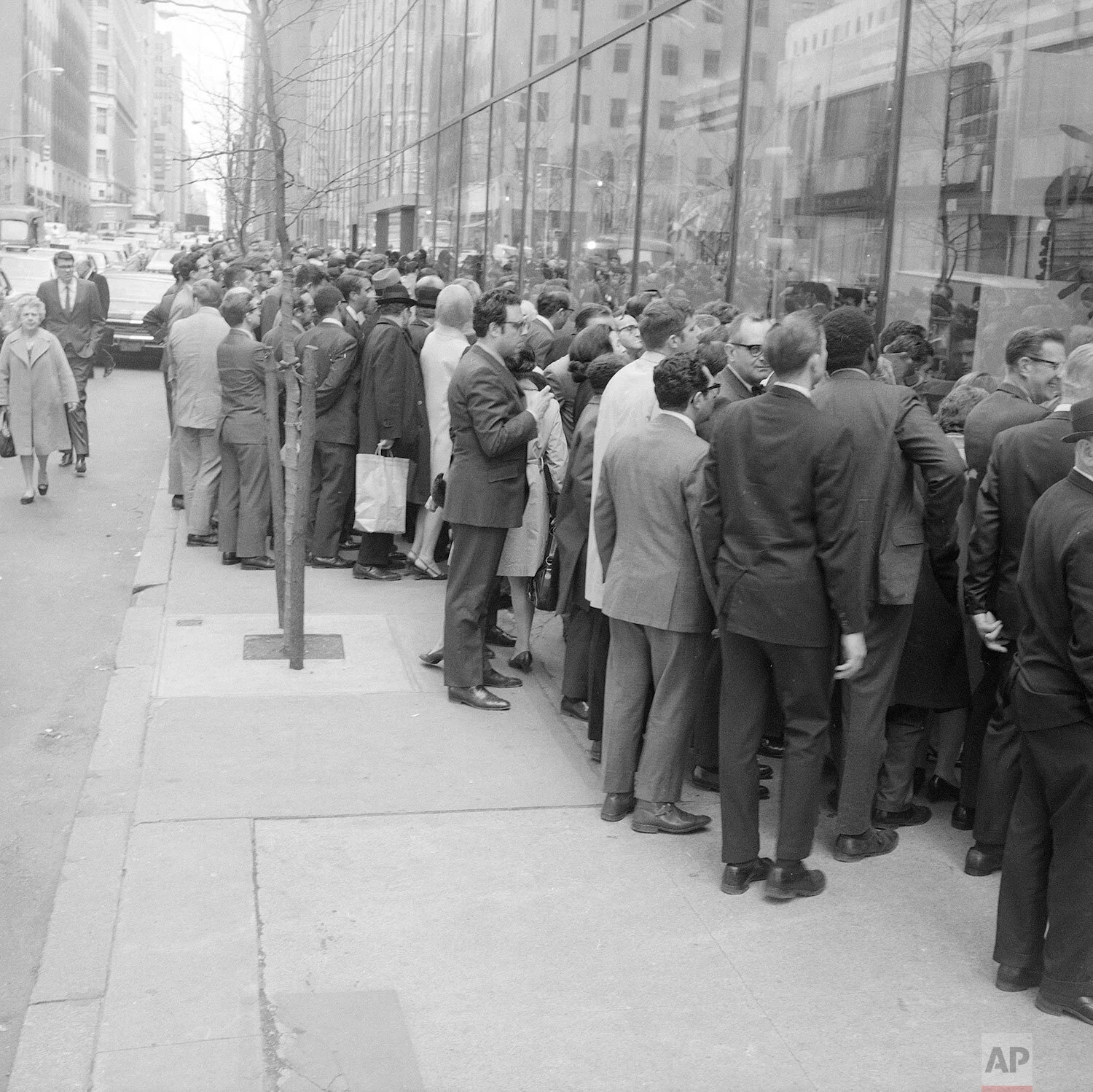
Television screens in windows of RCA Exhibition Hall on 49th street in Midtown Manhattan are carefully scrutinized by passersby concerned with the safety of the Apollo 13 astronauts near splashdown on the afternoon of April 17, 1970 (AP Photo)
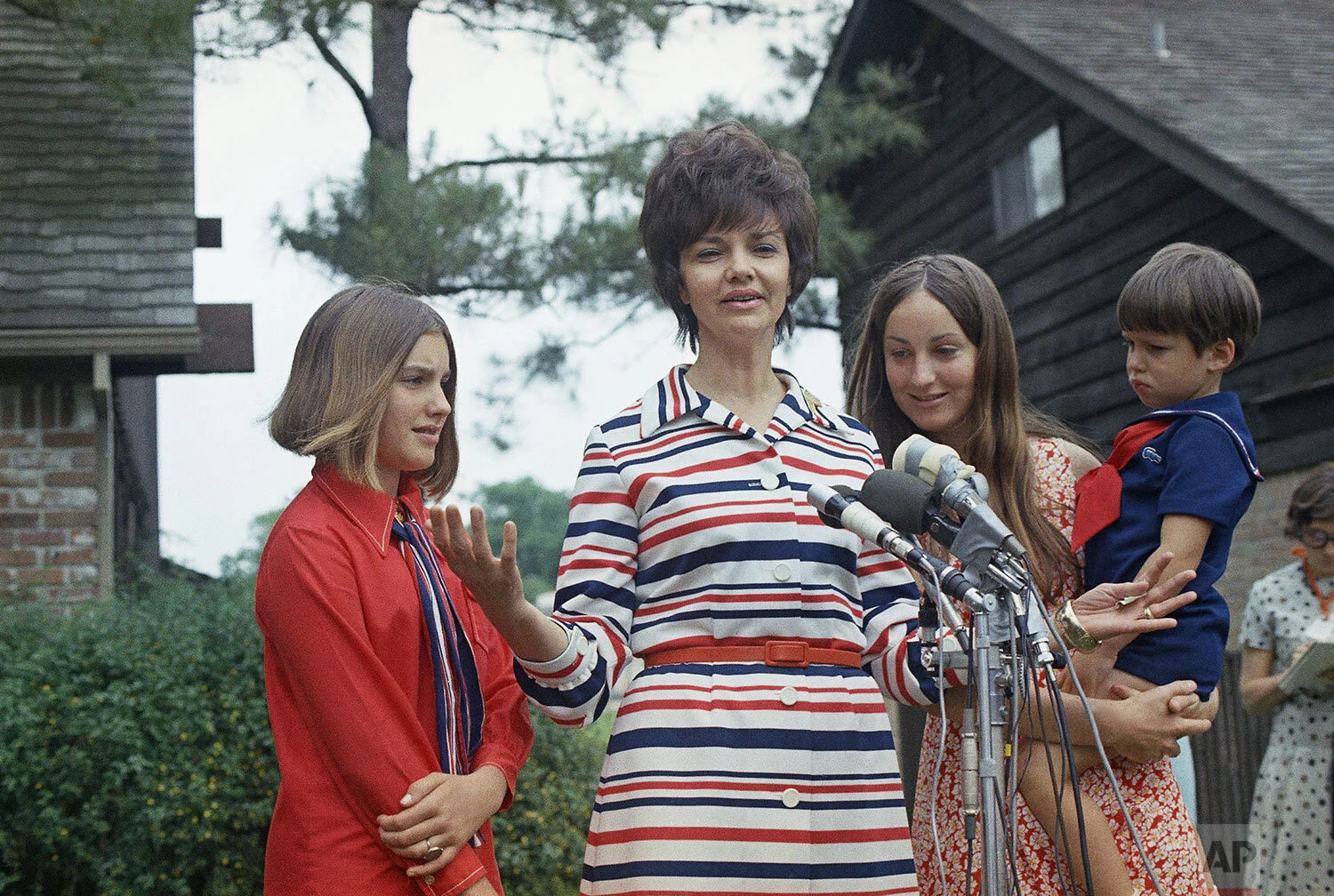
Marilyn Lovell is shown with her with children, from left, Susan, Barbara and Jeffrey, as she speaks to the media after her husband Jim Lovell's safe splashdown in Apollo 13 following its aborted lunar landing mission, April 17, 1970. (AP Photo)
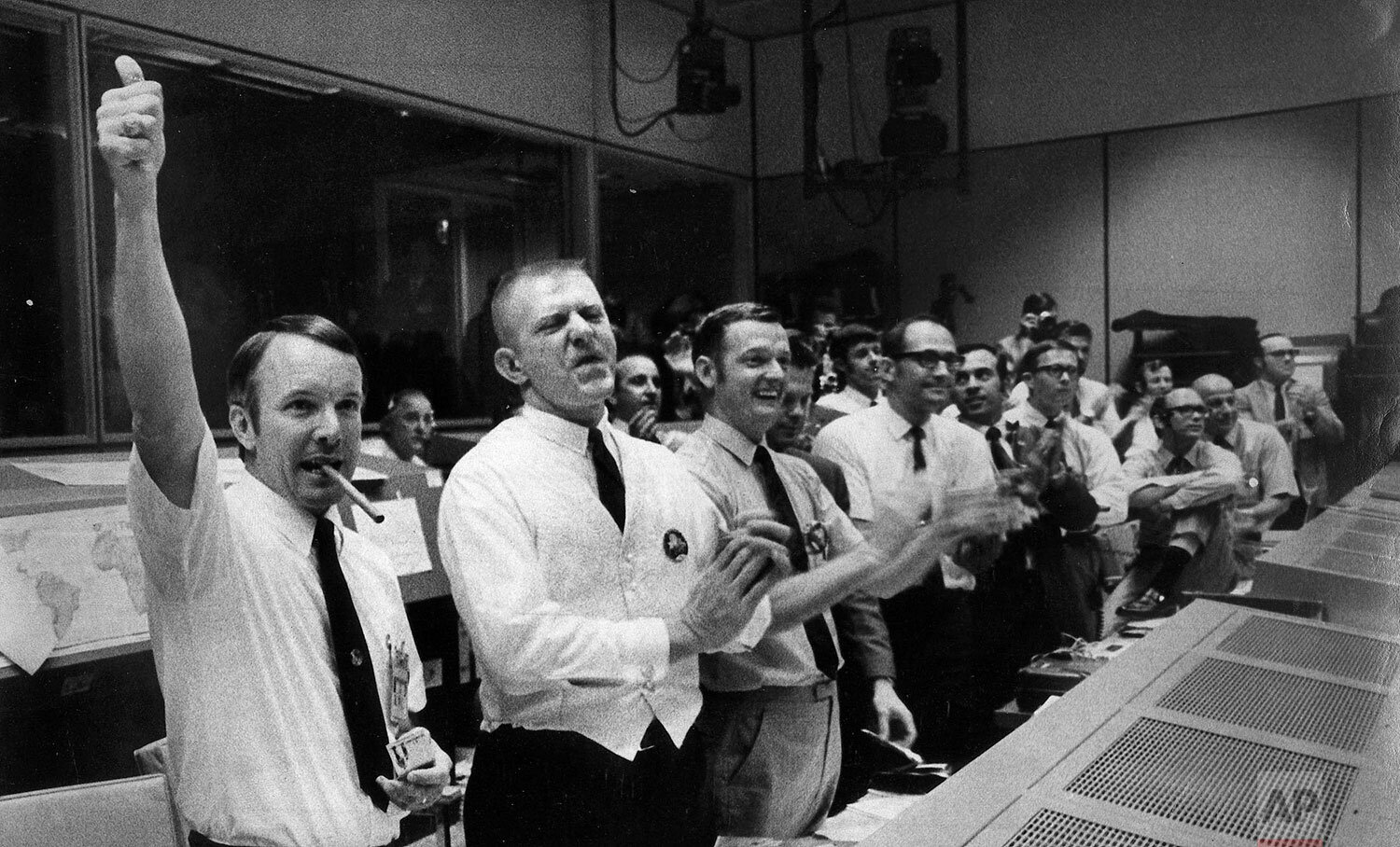
The four Apollo 13 flight crew directors who brought the crippled spacecraft back to Earth celebrate at their post in Mission Control at the Manned Spacecraft Center, Houston as they learn of the command module's successful splashdown April 17, 1970. From left are: Gerald Griffin, Eugene F. Kranz, Glynn S. Lunney and Milton L. Windler. (AP Photo/NASA)
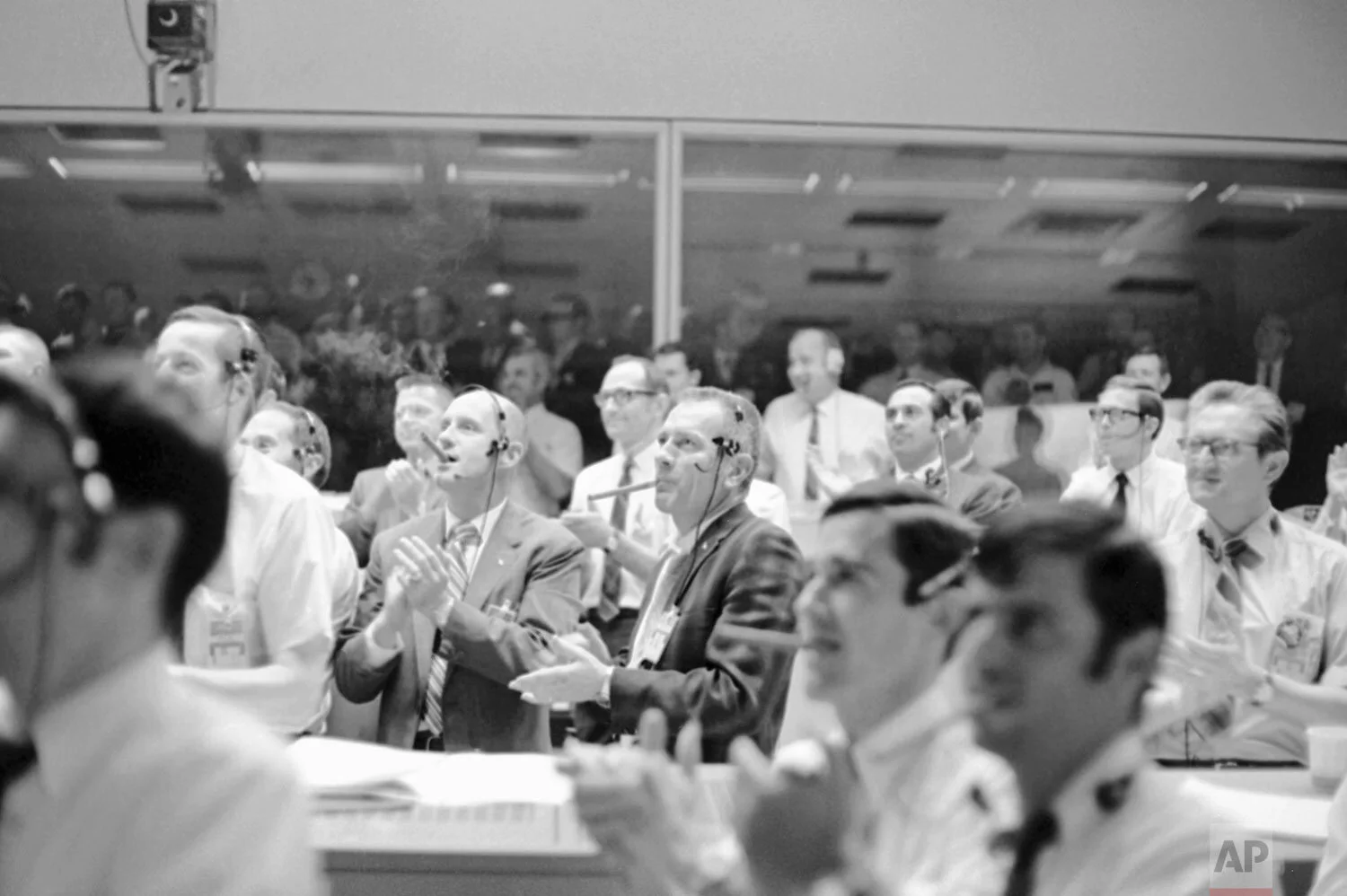
Astronaut Thomas Stafford, left, and Donald Slayton, Director of Flight Crew Operations, puff on big cigars and applaud as the Apollo 13 made a successful splashdown, April 17, 1970, Houston, Tex. (AP Photo)
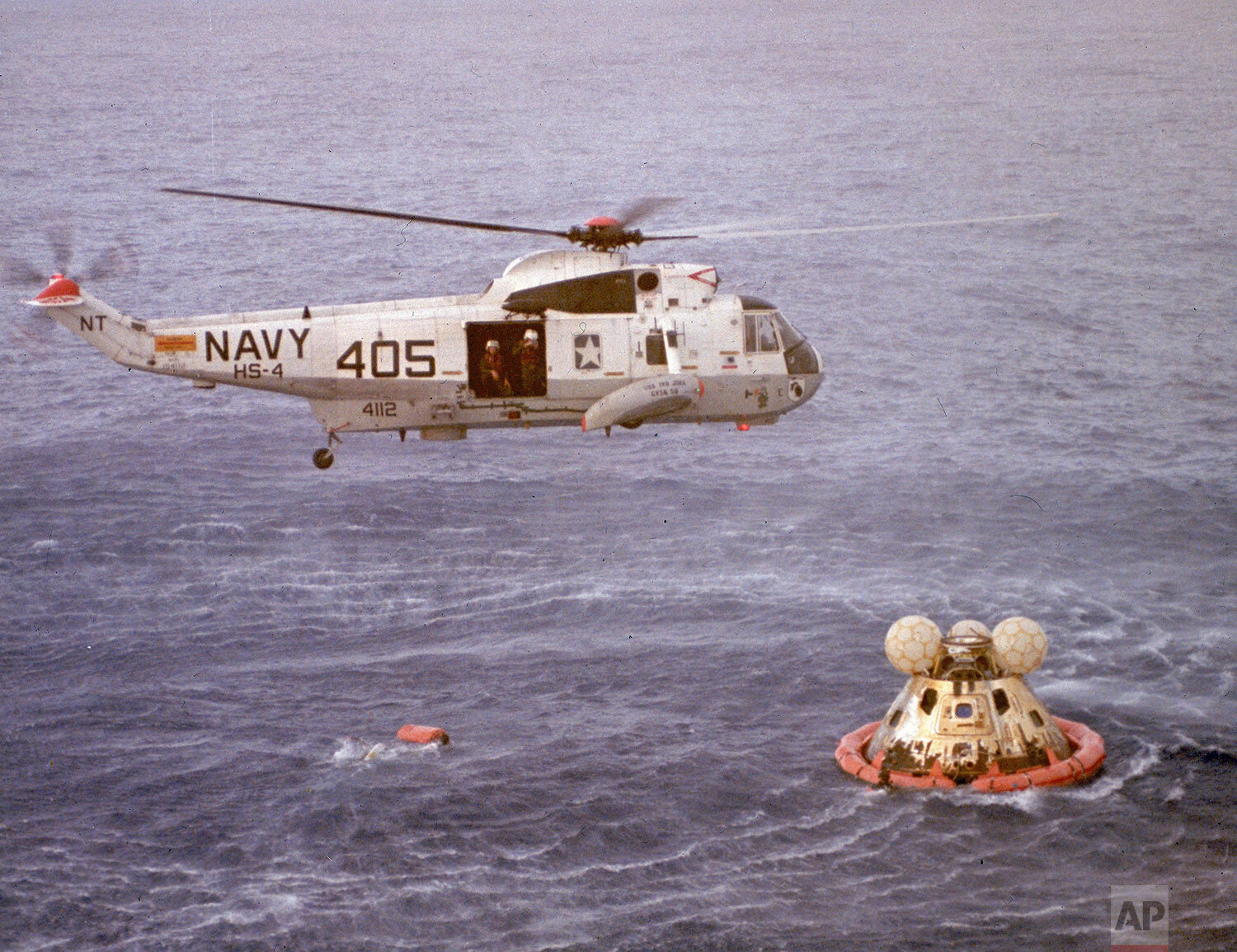
The Command Module Odyssey of the Apollo 13 space mission floats in the Pacific Ocean after splashdown near Samoa, April 17, 1970 while a U.S. Navy helicopter from the recovery ship U.S.S. Iwo Jima attempts to rescue the crew of three astronauts. (AP Photo)
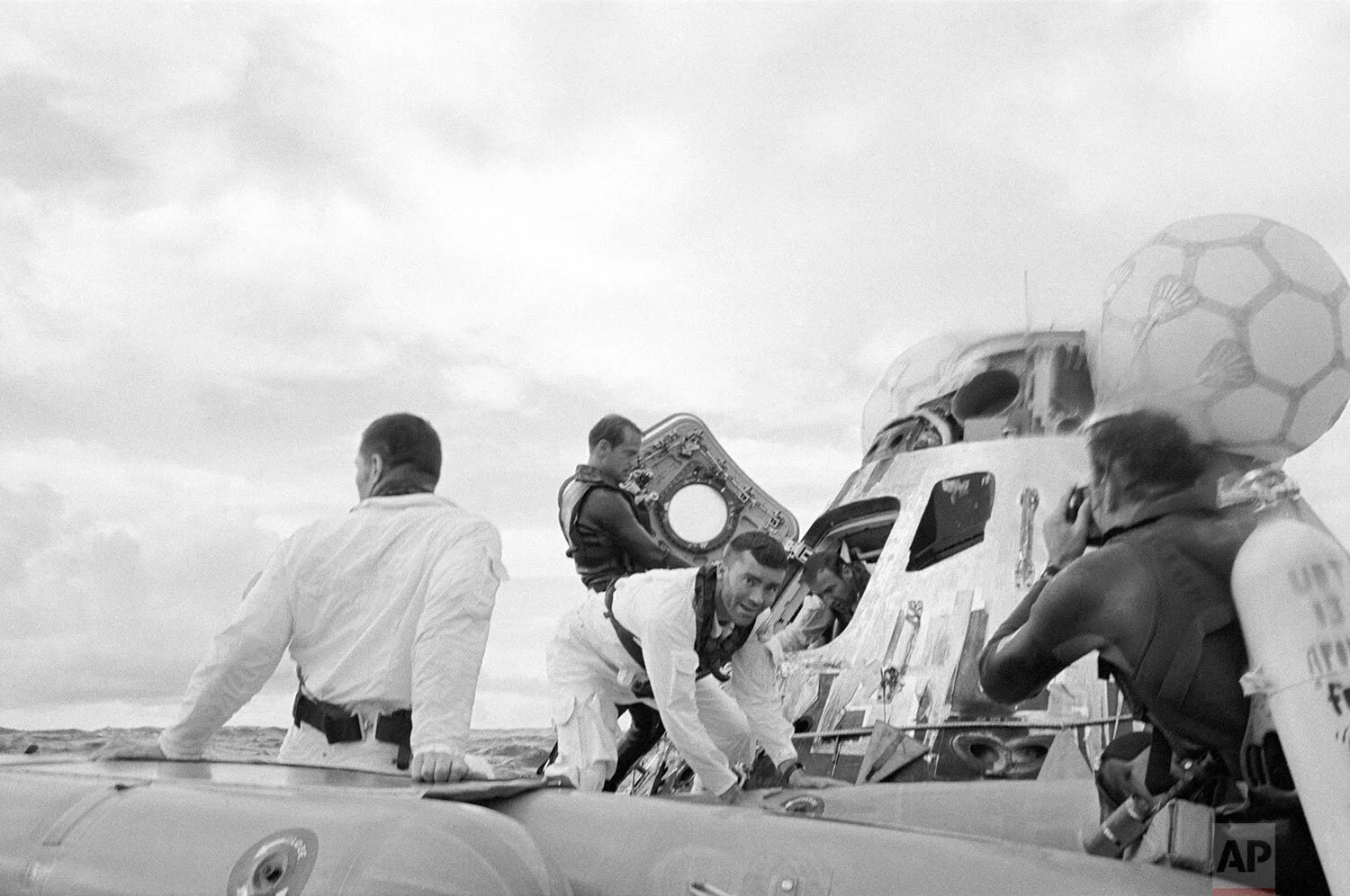
A water level view of the Apollo 13 recovery operations in the South Pacific Ocean, April 17, 1970. The three astronauts are seen leaving their spacecraft. John L. Swigert Jr. (back to camera), command module pilot, is already in the life raft. Fred W. Haise Jr., lunar module pilot, facing camera, is stepping into the life raft. James A. Lovell Jr., commander, is leaving the spacecraft in the background. (AP Photo/NASA)
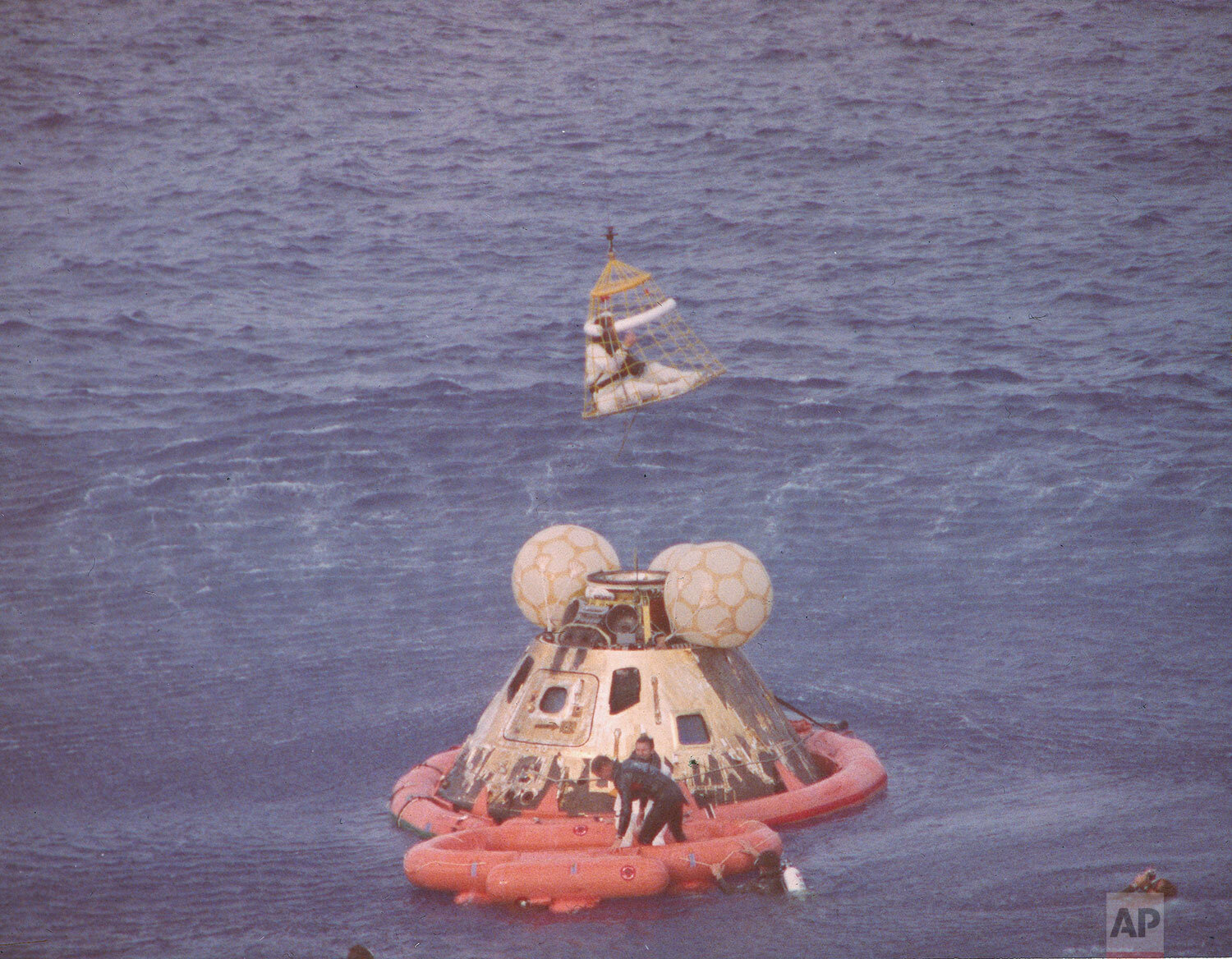
The Command Module Odyssey of the Apollo 13 space mission floats in the Pacific Ocean after splashdown near Samoa, April 17, 1970 while Navy personnel attempt to rescue the crew of three astronauts. (AP Photo)
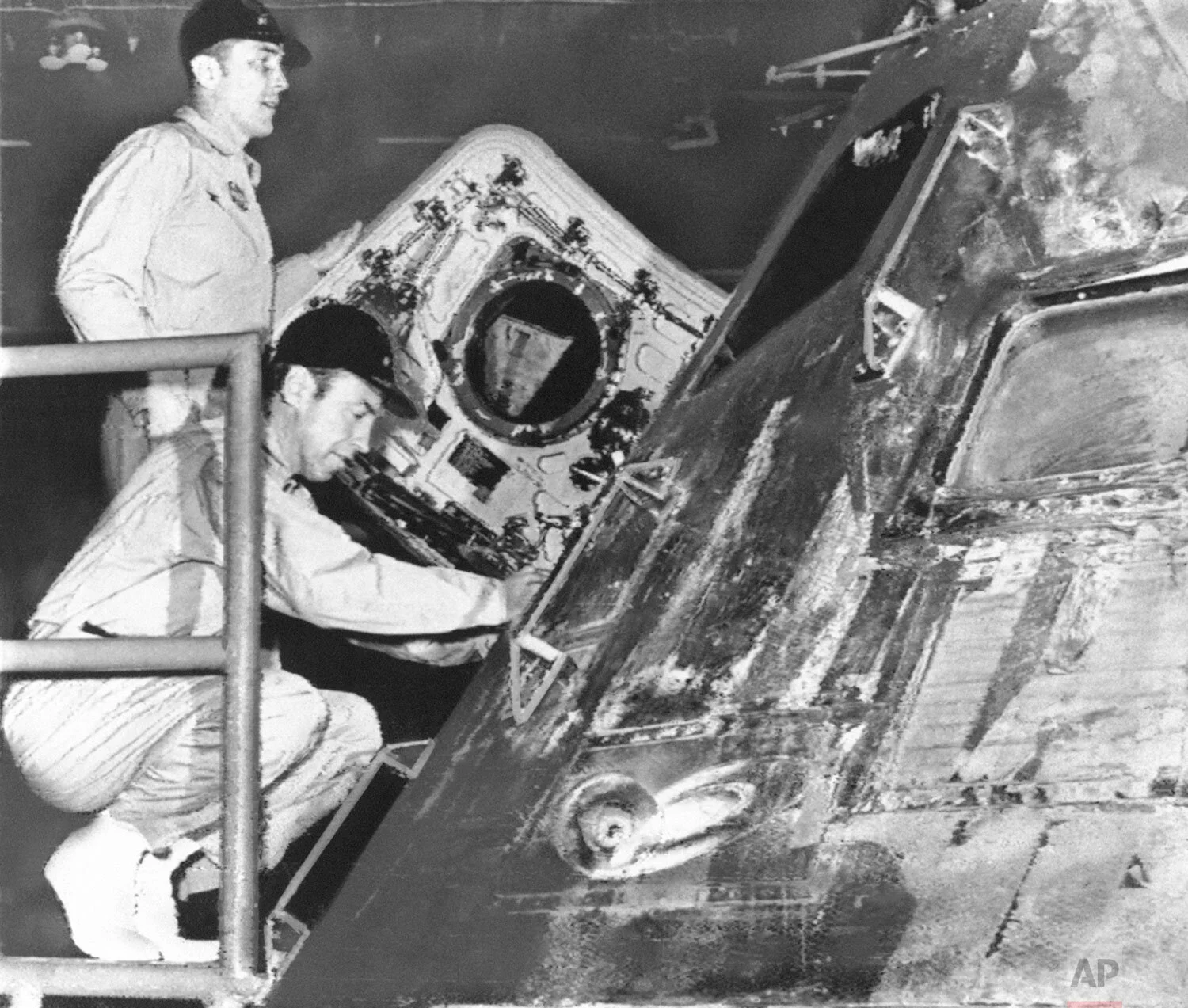
Safely aboard the prime recovery ship, USS Iwo Jima, astronauts James Lovell, squatting, and John Swigert, inspect the Apollo 13 command module that carried them to a safe splashdown in the South Pacific, Friday, April 17, 1970. (AP Photo)
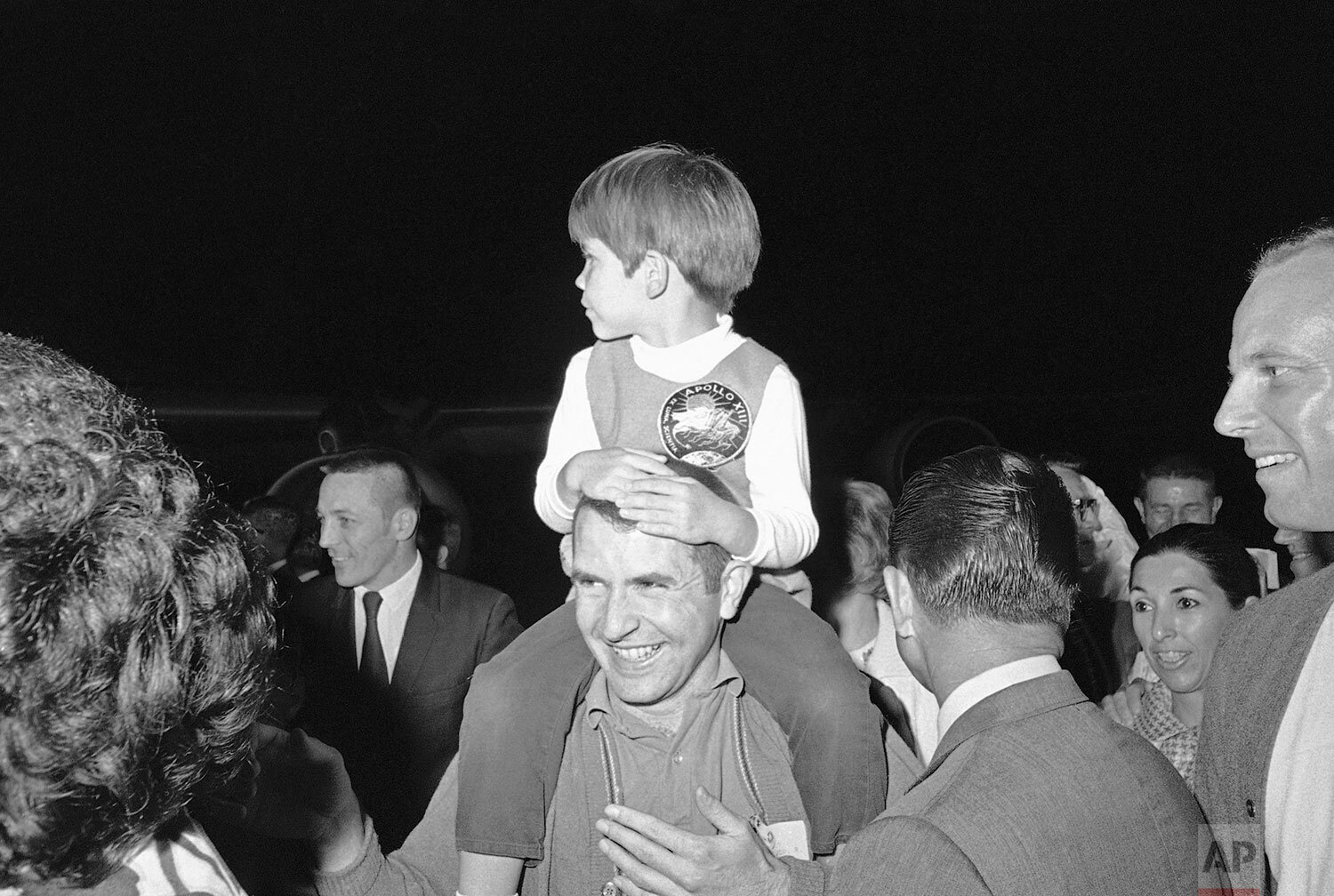
Apollo 13 Astronaut James Lovell Jr., holds his son, Jeff Lovell, 4, as he arrived back to Ellington Air Force Base, April 19, 1970, Houston, Tex. (AP Photo)

Residents of Timber Cove near the Manned Spacecraft Center greet their favorite neighbor, Apollo 13 commander James Lovell Jr., as he arrived at his home, April 19, 1970, Houston, Tex. (AP Photo)

Apollo 13 astronauts John Swigert Jr., with his arms upraise and James Lovell ride in parade in their honor, Friday, May 2, 1970 through Chicagos financial district as confetti streams from the skyscrapers. (AP Photo)
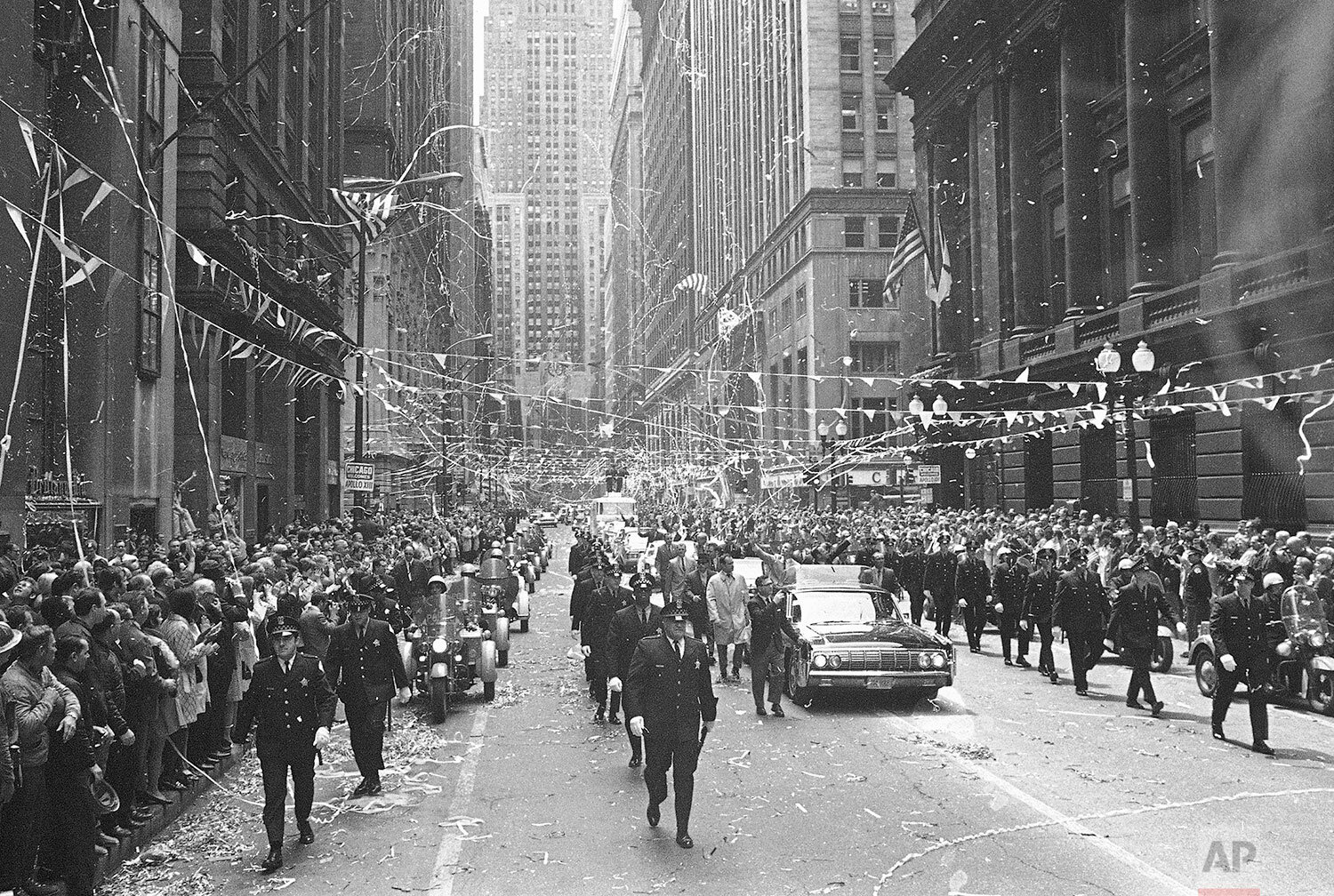
Confetti pours from the skyscrapers in Chicago’s financial district, May 1, 1970 as Apollo 13 astronauts John Swigert Jr., and James Lovell ride in a motorcade during a parade in their honor. (AP Photo)

Pittsburgh Post-Gazette, April 18, 1970.
Text from the AP story ‘Houston, we’ve had a problem’: Remembering Apollo 13 at 50 by Marcia Dunn.

